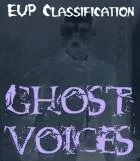 Learn about classifying different quality types of EVP you record.
Learn about classifying different quality types of EVP you record.
EVP classification, or classifying electronic voice phenomenon varies, as different EVP classification scales may be used by ghost investigation groups.
EVP are ghostly voices recorded from, typically a haunted environment and are not usually audibly heard during the EVP recording session. It is important to first understand that there are different qualities of ghostly voices; thus an EVP classification scale b ecomes important.
AA-EVP Classifications
Sarah Estep, founder of AA-EVP, created the "Estep EVP Classification System." In Sarah's chart, there are 3 types of EVP as a grading standard. This is probably the most popular classification used by ghost investigators.
Classification A EVP: "A clear and distinct voice or sound that is universally accepted and undisputed, because it must be understood by anyone with normal hearing and without being told or prompted to what is being said or heard. It can be heard without the use of headphones."
Classification B EVP: "A voice or sound that is distinct and fairly loud. This class of voice is more common and can be heard by most people after being told what to listen for. It is usually audible to experienced persons who have learned the skill of listening to EVP. It can sometimes be heard without the use of headphones."
Classification C EVP: "A faint and whispery voice or sound that can barely be heard and is sometimes indecipherable and unintelligible. It may have paranormal characteristics, such as a mechanical sound. Most investigators would apply objectivity and disregard it, but may save it for reference purposes."
SHGGRS EVP Classification System
Strange Happenings Ghost and Hauntings Research Society also came up with their preferred version of EVP classification that may be used to further define EVPs recorded. They chose to break down the EVP classification by type, level, and response clarification. The following is the list of classes, levels and categories that may be used:
Classes
Class DC (direct communication): The ghost voice clearly answers a question or directly responds to something said.
Class PC (personal communication): The ghost voice clearly says something meaningful directly to someone present.
Class RC (random communication): A ghost voice that answers no direct question, does not appear to be aimed at any particular person and doesn't make sense in the context it was receive.
Levels
Level 1: Loud, clear and easy to understand...sounds like natural speech (including whispers and fast speech).
Level 2: Lower volume and the voice is warped, but still discernable.
Level 3: Very low volume, hard to understand and excessively warped.
Categories
Morph: The voice and/or words of someone who is speaking is changed into something else in the playback of the recording. Words that are different than the person who spoke, or one voice changing to another, etc.
ERV (event related voices): Events such as someone talking or coughing, or the sounds of a passing train or car, etc. seems to trigger the EVP.
TR (thread related): One utterance is a comment on, or a response to, an utterance just before. They are related by contextual thread. Examples would be hearing two or more voices talking to each other, as well as a voice responding to something previously said by itself and/or someone or something else.
CHR (chorale): Two or more voices speaking at the same time, either saying the same thing or something different.
Some Notes Regarding EVP Classification:
The AA-EVP found that most EVP messages are recorded more frequently in the evening and/or during stormy weather (best times for ghost hunting). Most EVP messages are typically short in length, preceded by a click or thud sound, are usually in the language of the experimenter being delivered in a single voice (male or female), and exhibit a frequency shift different from the normal human voice frequency range.

